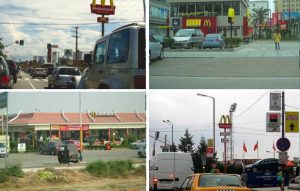To fight global climate change, fight global sprawl
Author: Micheal MehaffyOutlet: Public Square - A CNU JournalPublished: November 13, 2017Link to Article Articles 0
Michael Mehaffy explains how the ‘drive-through’ lifestyle, started in America and exported throughout the world, involves a lot of other patterns of consumption that feed off each other, exacerbating problems of sprawl and global degradation.
The point is, this is a global inter-locking system, working as a kind of “operating system for growth.” We call it “sprawl” for shorthand—but as most of us recognize, it’s not just low-density development, but an entire inter-locking, now international system of physical and economic development. It includes all the economic practices, lending rules, engineering standards, zoning codes, and all the other “operating system” elements, at local, national and international scales.
The other important thing to note about this system, as most of us know but tend to forget, is that it didn’t just happen: it was planned. The system of sprawl, the current “operating system for growth,” was not the natural outcome of American consumer tastes or inevitable market evolution, as some mythology still holds. It was created consciously by businesspeople, politicians, architects and planners, for what seemed like good reasons at the time. It was and is a choice, one that is now being made on a global scale, as the McDonalds examples show. And it was and is immensely profitable. Of course, the problem is that it is fundamentally unsustainable, and it incurs other catastrophic costs—like climate change.
We have the option of a truly more urban model—with more transportation choices, more diversity and mix of uses, more walkable streets and public spaces, and more vitality and “critical mass.” Those things are all very good for climate change.